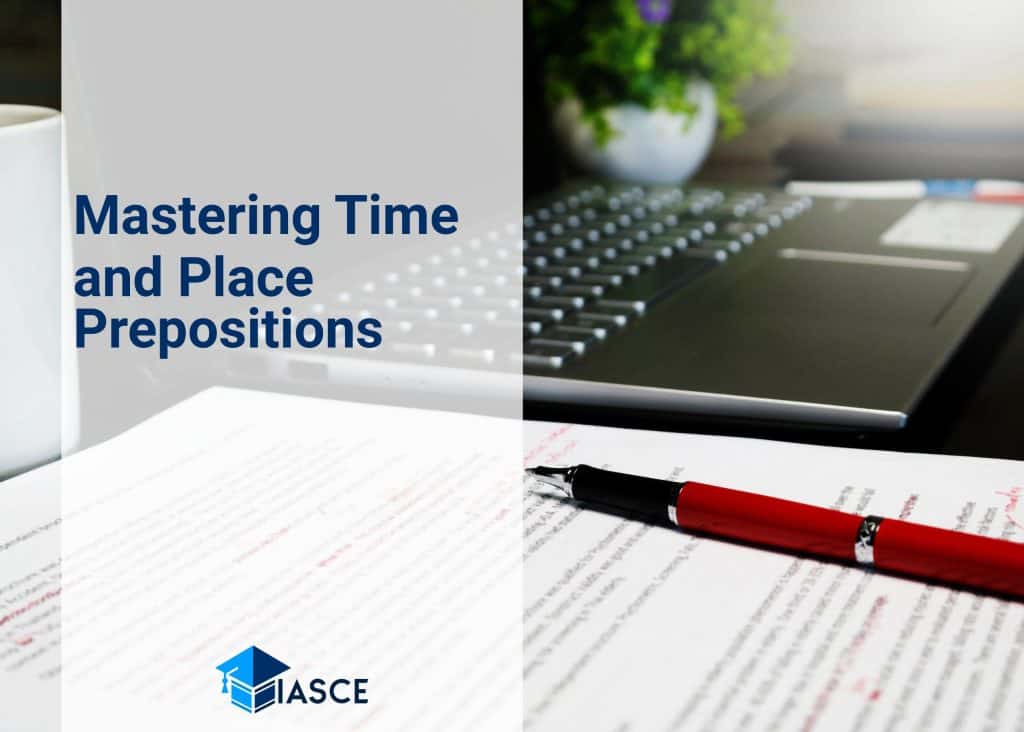Ever felt stumped by the simple prepositions ‘in’, ‘at’, and ‘on’? Trust me, you’re not alone. Despite being some of the most common words in English, these tiny titans can often leave even seasoned speakers scratching their heads.
In this guide, I’ll shed light on these tricky terms, focusing specifically on how they’re used to indicate time and place. With a bit of practice, you’ll find that grasping these prepositions is easier than it initially seems.
So let’s dive right into the world of ‘in’, ‘at’, and ‘on’. By the end of this article, you’ll not only understand when and where to use them but also why we use them in those specific instances. Buckle up because it’s going to be an enlightening ride!
Understanding ‘In, At, On’: An Overview
Diving straight into the subject of prepositions of time and place, let’s tackle three common ones: ‘in’, ‘at’, and ‘on’. It’s essential to note that these words play a crucial role in English grammar. They help us understand when or where something happens, adding context and clarity to our sentences.
Starting with ‘in’, we use this preposition for unspecific times during a day, month, season, year. We also use it when referring to a larger area where something takes place. For example:
-
I usually wake up early in the morning.
-
They went on vacation in July.
-
The flowers bloom in spring.
-
He was born in 1980.
-
She lives in New York City.
Looking at ‘at’ next, we use this preposition for specific times and places. Like so:
-
The meeting is scheduled at 3 PM.
-
You’ll find him waiting at the bus stop.
Finally comes ‘on’, used for days and dates as well as surfaces:
-
Let’s meet on Wednesday.
-
His birthday falls on April 20th.
-
The cat slept soundly on the mat.
To provide you with a quick reference guide here are some examples together in one place:
|
Time |
Place |
|
|---|---|---|
|
In |
In July; In the morning; In 1992 |
In New York City |
|
At |
At 3 PM; At midnight |
At the bus stop |
|
On |
On Wednesday; On April 20th |
On the mat |
We’ve just scratched the surface of how these prepositions work! There’s more to learn about their usage in different contexts but this should give you an understanding of their basic functions within English grammar.
Practical Examples: Using ‘In, At, On’ in Daily Conversation
Let’s dive straight into it. The prepositions ‘in’, ‘at’, and ‘on’ may seem trivial but they can dramatically alter the meaning of a sentence. It’s paramount to understand their correct usage in daily conversation.
Firstly, consider the preposition ‘in’ which is often used with months, years, seasons, and parts of the day. For instance:
-
I was born in December.
-
He graduated in 2010.
-
We enjoy hiking in the fall.
-
I prefer jogging in the morning.
Next up is ‘at’, usually applied to specific times on a clock or specific locations. Here are some examples:
-
Let’s meet at 5pm.
-
She’s waiting for you at the entrance.
Lastly, we have ‘on’, commonly used with days of the week or dates. See these sentences:
-
My appointment is on Tuesday.
-
Their wedding will be held on August 15th.
To provide an even clearer understanding, here’s how these prepositions work within a single context:
|
Preposition |
Sentence |
|---|---|
|
In |
We’re going on vacation in July |
|
At |
Meet me at our usual spot |
|
On |
Don’t forget our meeting on Friday |
Remember that while there are rules governing their use, exceptions exist too. Like most aspects of language learning, practice makes perfect! So don’t be afraid to experiment with these prepositions in your everyday conversations until you feel comfortable using them correctly.
Finally (and this is important), don’t let small errors discourage you! Even if you stumble at first while using these words – keep trying! After all, every mistake is a step closer to mastering English grammar.
Conclusion: Mastering Prepositions of Time and Place
Navigating the complex world of English prepositions may initially seem daunting. With practice, however, you’ll find that it starts to become second nature. Let’s take a moment to reflect on what we’ve covered.
We delved into the intricate details of how ‘in’, ‘at’, and ‘on’ function as prepositions of time and place. We found out that these small words can make a massive difference in meaning and clarity when used correctly.
Here are some key points to remember:
-
‘In’ is commonly used for larger or unspecified periods and places.
-
‘On’ often refers to surfaces, days, or dates.
-
‘At’ is typically employed for specific times or precise locations.
But this isn’t a rigid rulebook. There are always exceptions in English language usage that challenge these guidelines.
To truly master these prepositions, immerse yourself in the language as much as possible. Try reading books, watching movies or even speaking with native speakers if you can – they’re all great ways to bolster your understanding naturally!
Remember – Practice makes perfect! The more you use these prepositions in your daily conversations and writing exercises, the better grasp you’ll have over their application.
As an expert blogger focusing on English grammar intricacies like this one here’s my final advice: Don’t get disheartened if mistakes happen along the way; they’re stepping stones towards mastery! Keep practicing, stay curious about language intricacies – sooner than later, you’ll be wielding those pesky prepositions like a pro!

